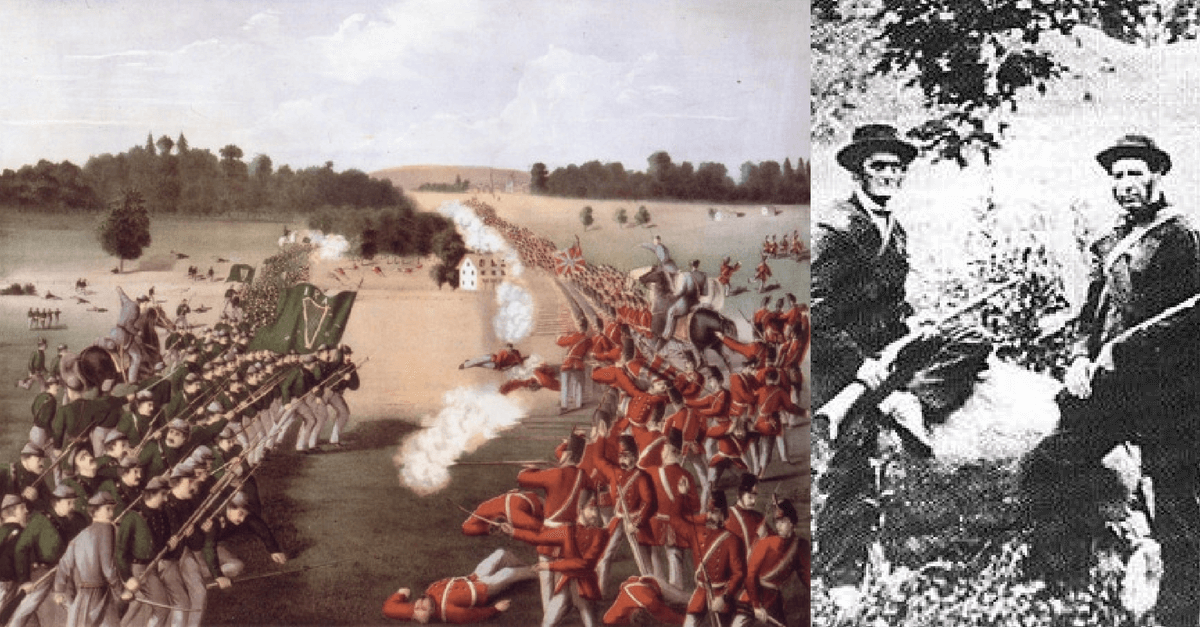The Irish have had a rough time in the era of modern history. They suffered from the awful potato famine and faced intense hostility when they came in droves to America. The British occupation of Ireland was also a tense subject, greatly exacerbated by the thought that British lack of aid during the potato famine was almost as bad as a full genocide against the Irish.
Many American Irish simply put their heads down and worked hard to find their place in America, but some were simply angry and wanted to do something. The Fenian Brotherhood was an Irish Republican group, largely based in New York City and Ireland, that bordered on a terrorist organization, though it did contain a large international faction aimed at simply giving humanitarian aid to Ireland.
One of their main goals was to free Ireland from British rule. Though technically not under orders from Ireland, the Fenians were a large contingent of Irish fighting on behalf of Ireland.
For the thousands of Fenian supporters in America, freeing their home island from British rule was a tough ask, seeing as it was across the Atlantic. But a massive British possession loomed just to the north. The idea was formed that the Fenian Brotherhood would form an armed invasion force to seize as large of a chunk of Canadian territory as they could. They could then use this as a bargaining chip, trading Irish independence for giving back their occupied territories of Canada.
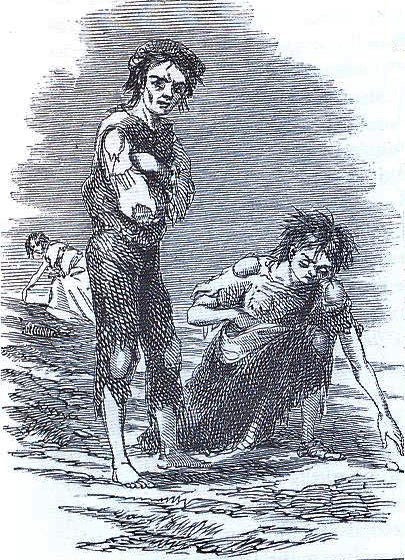
Before the large, planned attack, a group of about 700 Fenians invaded New Brunswick, but scattered very quickly at fast approaching British warships. A discouraging result for the Irish, but apparently not too much, for the other main attack would commence just two months later.
The plan was to cross the Niagara River between the Great Lakes of Erie and Ontario. The area was possibly defensible after it was secured and was able to be taken by surprise. Additionally, the US patrolling gunboat USS Michigan was sabotaged by crew loyal to the Fenian Brotherhood the morning of the invasion on June 1st, allowing most of the Fenian invaders to get across in multiple barges.
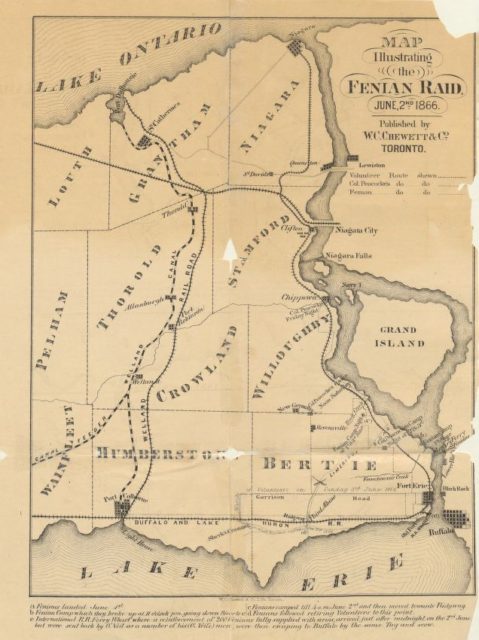
For such a bold attack it could be assumed that the Fenian Brotherhood had about 10,000 soldiers or more, considering their aspirations of invading Canada. Well, they probably had about 900, with a possible maximum of 1,500 men.
So, manpower was lacking, but firepower, command structure and experience were not. Many of the Fenian Brotherhood volunteers were veterans of the American Civil War. The war being very recent, they were skilled down to the individual level, being expert riflemen. They also had the ability to perform tactical maneuvers on command. The Irish also had plenty of weapons and apparently so much ammunition that they had to dump some in the river to lighten their load.
Once the USS Michigan was repaired, it was able to cut off the remaining Fenians and their supplies. Despite their position the Fenians across the river kept on marching, setting up an ambush for the soon to respond Canadian militia. The Fenian commander, John O’Neill, had extensive military experience and set up a trap to lure the Canadians to a ridge where the bulk of the Fenians were entrenched.
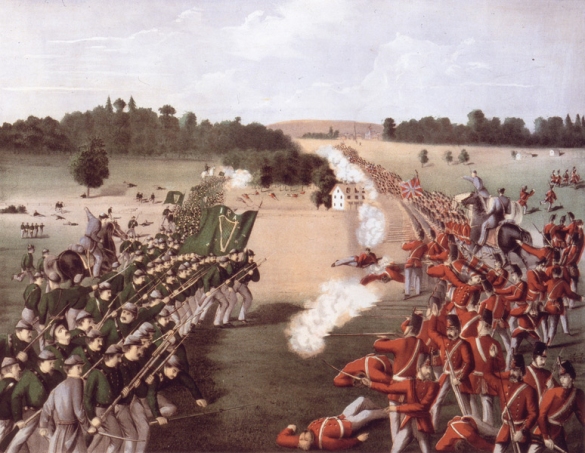
The battle of Ridgeway started with the larger Canadian force pushing back the forward units of Fenian troops. This progressed according to the Fenian plan to lure the Canadians to their fortifications on the ridge. As the Canadians were pressing onward, however, their discipline absolutely fell apart. It seems that one unit formed a square formation fearing an ultimately nonexistent cavalry charge. When the order was reversed the unit fell apart and the line of advance wavered.
The Fenians noticed the wavering of the lines and decided to rally their forces and launched a bayonet charge that broke the Canadians and prompted a full withdrawal. The Canadians suffered about 22 dead and 37 wounded to the Fenian’s five dead and 16 wounded.
The Fenians knew that they couldn’t hold the town of Ridgeway and decided to take the lightly defended Fort Erie. Here, 79 Canadians made a brave stand against the hundreds of Fenian attackers. After some fierce fighting, the Fenians captured the better-defended town.
Things didn’t change too much, however, as several thousand men of the Canadian militia and British regulars were advancing towards the Fenians. Despite their successes, the Fenians were losing hope in their cause with a massive sense of impending doom. About half of O’Neil’s forces deserted, many making makeshift rafts to cross the river back to America.
In the face of sure defeat, the Fenians marched back to American soil, being apprehended by American troops just on the other side of the river. The Fenians banked on some US support or at least US recognition of the Irish holding lands in Canada, but they were mistaken. The Americans did indeed make little effort to stop the rallying of the Fenians and have been accused of giving some support. It seems that the US saw the earlier failed “invasion” and figured that the second one would have a similar outcome, so it wasn’t worth the expense to root out and apprehend the invaders.
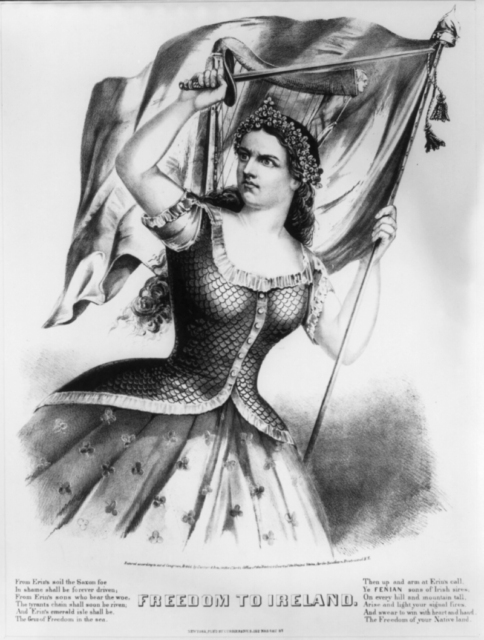
Despite the victories, the Irish invasion of Canada was a total failure, as no possessions could be held long enough to negotiate on behalf of Ireland. Despite these failures, many Fenians still held on to the idea of attacking Canada. The Fenian efforts redoubled after news that a Fenian made bomb was set off in London in an effort to break out a fellow Fenian. 120 people were injured and 12 killed by the blast. Aims for the radical Fenians seemed to shift from securing territory to simply causing enough problems to force negotiations.
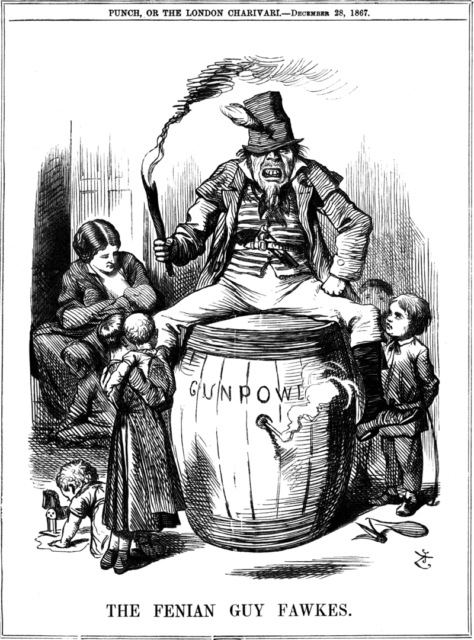
Several more raids were launched over the next several years; all were utter failures. US treatment of the raiders was usually quite lenient and they often simply ferried them away from the Canadian border. Despite their best efforts, Fenian raids and bombing fostered British resentment against the Irish and greatly undermined peaceful Irish independence movements. The raids also unified the Canadian territories as the citizens and militia had to rely on themselves to defend against these attacks that could happen at any time. This sense of unity would lead to the formation of an independent Canada.
